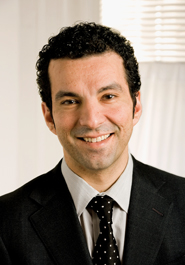Back when the New York Stock Exchange and the Nasdaq Stock Market operated a duopoly in equities trading, an institutional trader always knew where an order was being handled and who to yell at, according to Justin Schack, managing director of Rosenblatt Securities, the agency broker.
But that’s no longer the case, in the era of 13 national exchanges, 20 dark pools and scores of pools of customer orders operated by brokers themselves.

Sure, institutions now have the “illusion of control,’’ Schack said at the TradeTech industry conference at Pier 60 in Manhattan. Buysiders can choose between algorithms with built-in trading strategies to pick from provided to them by seven, eight or nine different sell-side brokerages.
But, “once you press the button, though, where is your order?,’’ Schack asked.
Brokers can route the order in “ways that may not be in your economic best interest’,’ but is to their advantage.
The orders typically will be send through a “low-cost routing wheel” that favorst the bottom line of the broker.
The first stop: a broker’s own dark pool, where it can cross both sides of the trade, at no cost. The second stop: Exchanges or venues that pay rebates for “taking” liquidity with their orders. The last stop: Markets that pay high fees for “taking” liquidity out.
In the process, information leaks at each stop about the institution’s order and the risk increases that prices will move the wrong way.
To cope, institutions can invest in technology and pull in large amounts of data from the orders handled by each broker, every day. The keys: Financial Information Exchange tags such as tag 29, which identifies the “last capacity” that a broker acted in on the order, and tag 30, which identifies the “last market” visited by the order.
The alternative: Periodic reviews. This requires less time commitment and produces data that is easier to analyze, Schack said.
This involves asking each algo broker for a monthly, quarterly, or semi-annual data dump that shows where all shares are routed and where all trades are executed, broken down by venue.
That data then should be run against filters that show what percentage of the orders that get filled occur at or near the best bid or offer; and, what percentage gets filled at or near the midpoint between the best bid and offer.
Questionnaires should also be sent to the brokers on their order handling and routing policies, to find out, for instance, what order types are permitted in the venues they use and what order types do get used.
After that, institutions need to take action, to actually have control. For starters, he said, this would include nixing the use of venues with low fill rates or that yield minimal improvements in prices.
A longer-term solution to the conflicts of interest on how and where to route orders would be achieved by ending the maker-taker model of paying for order flow, said Joseph Saluzzi, partner and co-head of equity trading at Themis Trading LLC in Chatham, New Jersey, after Schack spoke.
Replace rebates with flat fees for each side of a trade and the conflicts will disappear, he argued.



